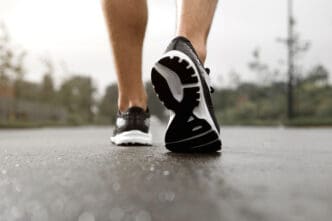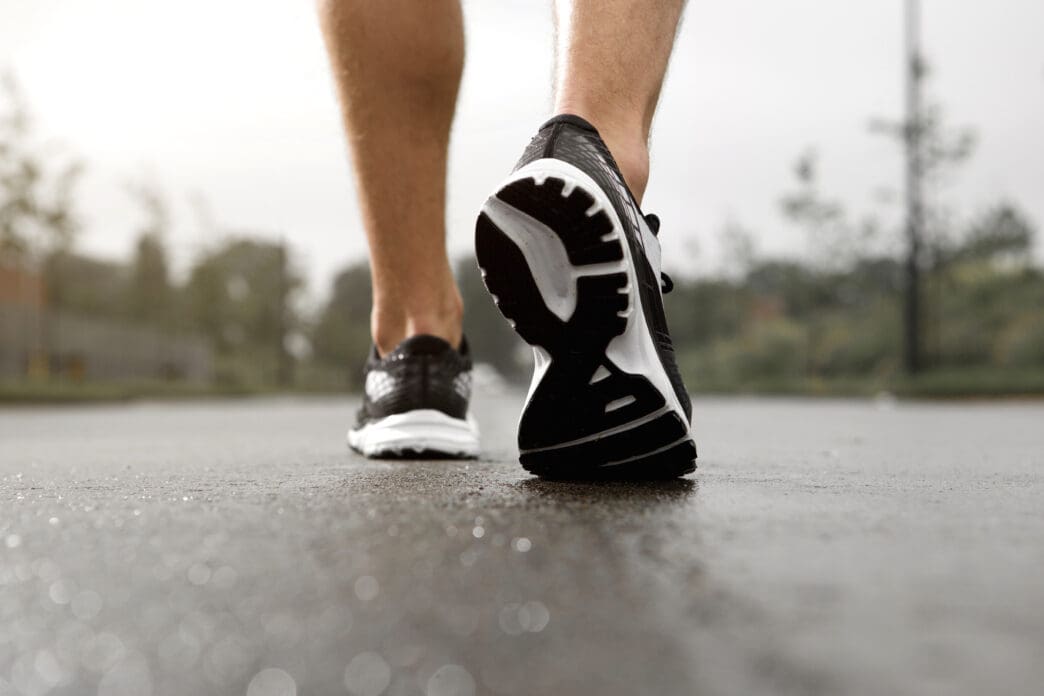For any runner, from the weekend warrior logging a few miles to the dedicated marathoner, the single most important piece of gear is the running shoe. Finding the perfect fit is not a luxury; it is the fundamental step in preventing injury, enhancing performance, and ensuring long-term enjoyment of the sport. The process involves a crucial partnership between you and a footwear expert, typically at a specialty running store, to analyze your unique foot anatomy, your gait mechanics, and your personal running goals. Ultimately, the right shoe provides a tailored combination of cushioning, stability, and comfort that protects your body from the repetitive impact of running, making every stride safer and more efficient.
Why the Right Fit Matters More Than You Think
Selecting a running shoe based on color or brand loyalty is one of the most common mistakes a runner can make. An ill-fitting or inappropriate shoe can be the direct cause of a host of common running-related injuries, from nagging shin splints and plantar fasciitis to more severe issues like IT band syndrome and stress fractures. Your feet are the foundation of your entire kinetic chain, and how they interact with the ground sends forces up through your ankles, knees, hips, and back.
A properly fitted shoe works to mitigate these forces effectively. It supports your foot’s natural movement, corrects for biomechanical inefficiencies, and absorbs shock that would otherwise be transmitted to your joints and bones. This not only keeps you healthy but also improves your running economy—the measure of how efficiently your body uses oxygen at a given pace. When your shoes are working with you, not against you, you expend less energy, feel more comfortable, and can run stronger for longer.
It is critical to understand that there is no single “best” running shoe for everyone. The shoe that your friend raves about or the model worn by an elite athlete may be completely wrong for your specific needs. The perfect shoe is a deeply personal choice, dictated entirely by your individual biology and how you run.
The Anatomy of a Running Shoe: Key Components to Understand
To make an informed decision, it helps to understand the basic parts of a running shoe and the role each component plays. Think of it as learning the key features of a car before you take it for a test drive. These components work together to deliver a specific feel and function.
The Upper
The upper is the soft, fabric part of the shoe that encases your foot. Modern uppers are typically made from engineered mesh or knit materials designed for breathability, flexibility, and support. A well-designed upper should hold your foot securely in place without causing hot spots or irritation.
The Midsole
The midsole is the heart and soul of the running shoe. Sandwiched between the upper and the outsole, this is the layer of foam that provides cushioning and absorbs impact. Midsoles are commonly made from EVA (ethylene vinyl acetate) or more advanced, responsive compounds like TPU (thermoplastic polyurethane). The thickness and density of the midsole foam determine whether a shoe feels soft and plush or firm and responsive.
The Outsole
The outsole is the durable rubber layer on the bottom of the shoe that makes contact with the ground. Its primary functions are to provide traction and protect the midsole from abrasion. Trail running shoes will have deeper, more aggressive lugs for grip on uneven terrain, while road shoes have flatter, more durable rubber designed for pavement.
Heel-to-Toe Drop
Heel-to-toe drop (or offset) is the height difference between the heel and the forefoot, measured in millimeters. A traditional running shoe might have a drop of 10-12mm, while more minimalist or “natural” shoes have a lower drop of 0-6mm. This measurement can influence your foot strike; a higher drop tends to encourage a heel strike, while a lower drop promotes a midfoot or forefoot strike. Abruptly changing your drop can put new stress on the Achilles tendon and calf muscles, so any transition should be gradual.
The Toebox
The toebox is the front part of the shoe that houses your toes. It is essential that this area is wide and deep enough to allow your toes to splay naturally upon landing. A cramped toebox can lead to blisters, black toenails, and even neuromas. You should be able to wiggle your toes freely.
Your Pre-Shopping Checklist: Know Before You Go
Before you even step into a store, you can gather valuable information that will guide your search. Doing a little homework on your own body will make the fitting process more efficient and effective.
Understand Your Foot Type
A simple way to get a rough idea of your arch height is the “wet test.” Simply wet the bottom of your foot and step onto a piece of cardboard or a dark towel. A flat foot will leave a full, wide imprint. A high-arched foot will show a very thin band connecting the heel and the ball of the foot. A neutral arch will fall somewhere in between. This gives you a starting point for understanding what kind of support you might need.
Analyze Your Gait: Pronation Explained
Pronation is the natural inward roll of the foot as it transitions from heel to toe during a stride. This is a normal and necessary motion for shock absorption. However, the degree to which your foot pronates is a key factor in shoe selection.
- Neutral Pronation: The foot rolls inward by an ideal amount, effectively distributing impact forces. Runners with neutral pronation can typically wear a wide variety of shoes but often do best in “neutral” cushioned models.
- Overpronation: The foot rolls excessively inward, often associated with flatter arches. This can place extra stress on the inner shin, knee, and ankle. Overpronators generally benefit from “stability” or “motion control” shoes that use denser foam on the medial (inner) side to slow the rate of pronation.
- Supination (Underpronation): The foot fails to roll inward enough, causing impact forces to be concentrated on the outer edge of the foot. This is often associated with high arches. Supinators need well-cushioned, flexible “neutral” shoes to encourage a more natural foot motion.
Define Your Running Goals
Consider the practical aspects of your running routine. Will you be running primarily on roads, trails, or a treadmill? Trail shoes offer enhanced traction and protection from rocks and roots, while road shoes prioritize cushioning and smooth transitions. Also, think about your typical mileage. A shoe designed for daily training will have more durable cushioning than a lightweight, minimalist shoe built for race day speed.
The In-Store Experience: How to Test and Choose Your Shoe
While online research is helpful, nothing replaces the expertise and technology available at a specialty running store. The staff are trained to analyze gait and understand the nuances of different shoe models and brands.
When and How to Shop
Plan your shopping trip for the late afternoon or evening. Your feet naturally swell throughout the day, and trying on shoes when they are at their largest ensures you don’t buy a pair that’s too small. Be sure to bring your current or old running shoes with you; an expert can analyze the wear patterns on the outsole to gain clues about your gait. Finally, wear the type of socks you normally run in to get the most accurate feel for the fit.
The Gait Analysis
Most specialty stores will perform a free gait analysis. This typically involves a staff member watching you walk barefoot and then run for a minute on a treadmill. They may record a short video to play back in slow motion, allowing them to precisely observe your foot strike and degree of pronation. This analysis is the most reliable way to determine if you are a neutral runner, an overpronator, or a supinator.
Trying Them On: The Fit Test
Based on the analysis, the associate will bring out several models that suit your needs. When trying them on, follow these steps:
- The Thumb’s Rule: Ensure there is about a half-inch, or a thumb’s width, of space between the end of your longest toe (which may not be your big toe) and the front of the shoe. This extra room accounts for foot swelling and forward movement during your stride.
- Width and Volume: The shoe should feel snug and secure around your midfoot and heel, but not constricting. You shouldn’t feel any pinching or excessive pressure on the sides of your feet.
- Heel Lock: Walk and jog around the store. Your heel should remain locked in place with minimal to no slipping. A slipping heel is a primary cause of blisters.
- Prioritize Comfort: Ultimately, the best shoe is the one that feels the most comfortable. If a shoe feels “off” or creates any pressure points in the store, those issues will only be magnified miles into a run. Trust your gut feeling.
Common Mistakes to Avoid
To ensure your investment pays off, steer clear of these common pitfalls. Avoid buying a shoe purely for its aesthetics or because it’s on sale. Never assume your running shoe size is the same as your dress shoe size, or even the same across different running brands. Always get measured. Lastly, pay attention to the lifespan of your shoes. Most running shoes are designed to last between 300 and 500 miles. Running in worn-out shoes is a leading cause of injury, as the midsole foam degrades and loses its ability to absorb shock.
Finding the perfect running shoe is a journey of self-discovery. By understanding your own anatomy, defining your running needs, and seeking expert guidance, you can make an informed choice. This single decision is the most profound investment you can make in your running journey, paving the way for countless miles of healthy, comfortable, and joyful running.







